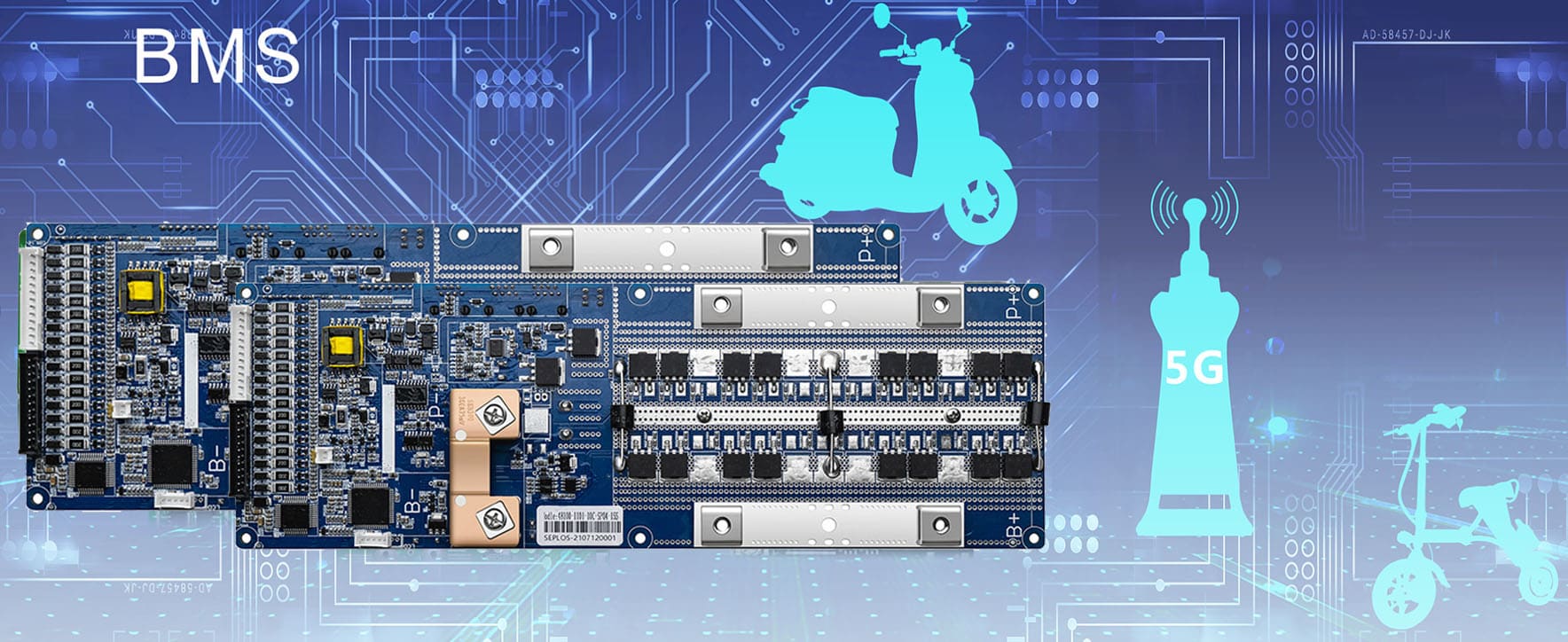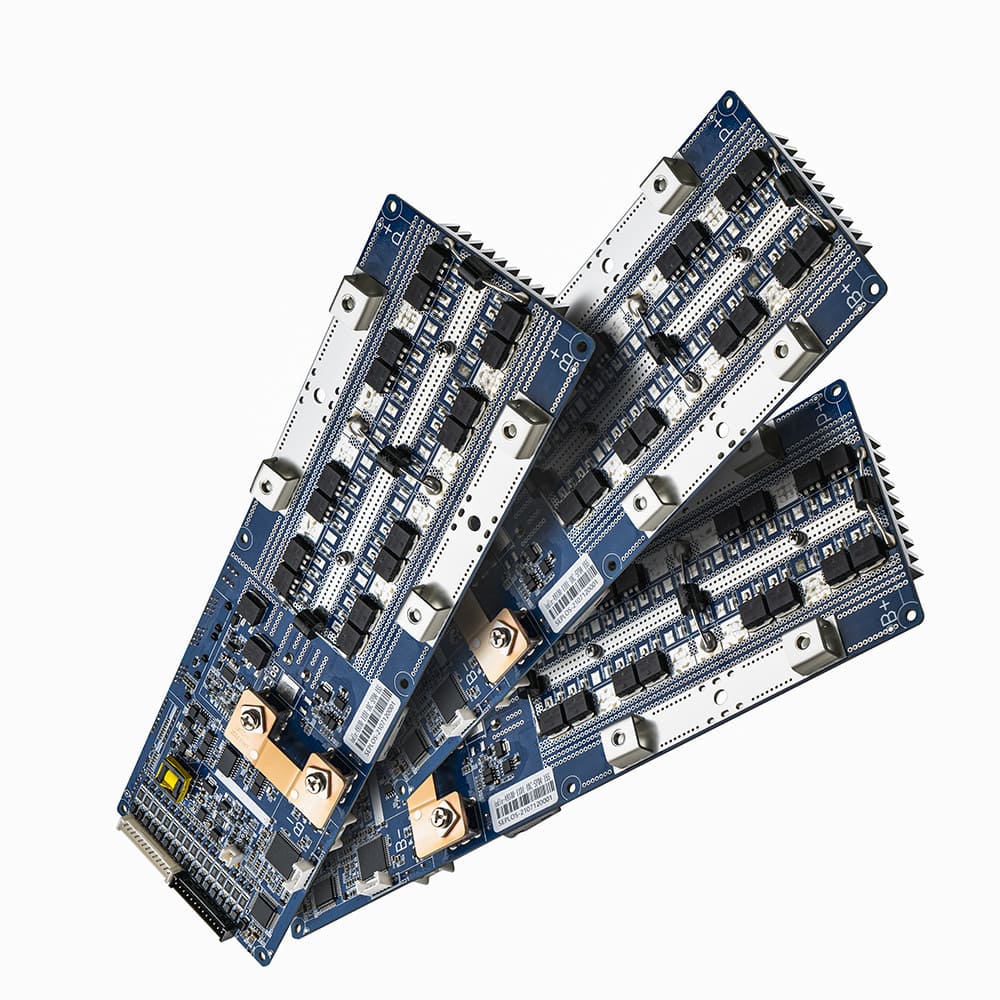Vnice Power
Industry News
How Do I Choose A BMS For LiFePO4?
19/4/2024
When looking for the best BMS for LiFePO4, you might get overwhelmed with different choices. This article will make you pick the right one.
There are a few parameters in which you would be interested in. These are:
-
Current
-
Voltage
-
Amount of cells
-
Balancing current
-
Place of manufacture
-
Low temp disconnect
-
App connectivity
-
RS485
From here, we will list the most used BMS’es for LiFePO4 batteries.
Most Used BMS For LiFePO4 Battery Cells
1. JK Smart BMS
The JK or JIKONG active balancer BMS is a great choice for 48V systems. The app layout is easy to navigate with many options. It comes with three temperature sensors for high and lowtemperature cutoff. The BMS uses active balancing.
-
Current: 100 to 200A
-
Voltage: 48VDC
-
Amount of cells: 4S to 24S
-
Balancing current: 0.6 to 2A
-
Place of manufacture: China
-
Low temp disconnect: Yes
-
App connectivity: Yes
-
RS485: Yes
2. JBD
This BMS is getting more popular amongst DIY battery builders. And for a good reason. it features all the necessary elements needed in a BMS.
-
Current: 6A to 300A
-
Voltage: 12V to 96VDC
-
Amount of cells: 1S to 30S
-
Balancing current: 2040mA
-
Place of manufacture: China
-
Low temp disconnect: Yes
-
App connectivity: Yes, XiaoXiang
-
RS485: Yes
The balancing current is relatively low, so an initial top balance and having a passive balancer is advised. The app is very easy to navigate and adjust parameters.
3. DALY
Daly has been a popular choice since the beginning. A lot of people have chosen this brand because of the many guides which you can find online. It has a vast range of options for you to choose from. It has smart options and standard options. The smart option work with Bluetooth and an app. The standard option is a plugandplay version.
-
Current: 10A to 500A
-
Voltage: 12V to 120VDC
-
Amount of cells: 3S to 32S
-
Balancing current: 30mA
-
Place of manufacture: China
-
Low temp disconnect: NO
-
App connectivity: Smart version, yes. Standard version, no
-
RS485: Yes
An important thing to mention with Daly is that while the discharge current is 100A, the charge current is only 50A. The balancing current is rather low at 30mA. Below you can see the spec sheets. It also has no lowtemperature disconnect. A real turnoff when you live in a cold climate.
4. REC BMS
REC is a Slovenian company who makes a reliable BMS. The BMS can be paired with a shunt and is Compatible with SMA sunny island. The standard REC Q BMS can be used up to 16S, and with the master unit, you can connect 240 cells in series. It also has a relay and digital outputs. The current doesn’t pass through this BMS like the DALY or JBD BMS.
-
Current: Doesn’t go through the BMS
-
Voltage: 13V to 68VDC
-
Amount of cells: 5S to 16S
-
Balancing current: 2A
-
Place of manufacture: Slovenia
-
Low temp disconnect: Yes
-
App connectivity: Connected to the web for remote access
-
RS485: Yes
Their customer support is good and compatible with Victron (cerbo GX), so you can have the battery shown on their display.
This BMS can be used with an alternator because its output can turn off a relay.
5. Batrium BMS
CellMateK9 is the most recent version of their product line. The Batrium BMS is ideal for DIY powerwalls. With it’s many available expansions and great graphical interface, this BMS is a great option. The current doesn’t pass through this BMS like the DALY or JBD BMS.
-
Current: Doesn’t go through the BMS
-
Voltage: 12V to 48VDC
-
Amount of cells: 3S to 16S
-
Balancing current: 500mA
-
Place of manufacture: Australia
-
Low temp disconnect: Yes
-
App connectivity: Connected to the web for remote access or app
-
RS485: Yes
Data logging for over 10 years with a built in clock. Additional input and outputs are available with expansion boards. You can extend the BMS if you want to add more cells to the system later.
6. QUCC
The QUCC is a BMS that uses a relay instead of MOSFETs to break the circuit. This results in the cost being lower, but that doesn’t make it more reliable.
If you have a capacitor in your system from an inverter and the relay closes, the arc between the two contacts can cause both contacts to melt. This can prevent your relay from opening again.
...........
How Do I Choose A BMS For LiFePO4
Do you want to adjust the parameters in your BMS If so, then choose a smart BMS. Most of the BMS’es you can find are smart.
Do you need a lowtemperature cutoff Having that kind of protection might be necessary if you live in a climate where it gets cold.
Is your battery pack top balanced A BMS with a higher balancing current will be the best choice if it’s not topbalanced.
Do you value products made outside of China If so, there are many options, but you will pay a higher price for them.
FAQ
Do LiFePO4 Batteries Need A BMS
If you are building a DIY battery, you should add a BMS. They can work without, but the cell voltages will drift away from each other over time. One cell will lower the whole battery voltage and will be damaged. That’s why a BMS with a balancer is needed.
If you buy a readymade battery, the BMS will be included.
What Is The Difference Between Smart And Dumb BMS
A smart BMS connects to an app through Bluetooth, wifi, RS485, or a CAN connection. You can change the settings in the graphical interface. A standard or ‘dumb’ BMS is plug and play. The settings cannot be changed.
What Is The Difference Between A Switch BMS And Relay BMS
A switch BMS uses MOSFETs to turn off the current. A relay BMS turns off the current with a relay. It’s worth noting that a relay is not always made to interrupt current as a breaker can. So the relay contacts can ‘stick’ to each other.
What Is The Difference Between Active And Passive Balancing
Passive balancing will remove or add capacity from a particular cell and dissipate it as heat. Active balancing takes the excess from one cell and delivers it to a cell with a lower voltage. Active balancing has fewer losses and is thus more efficient.
What Size BMS Should I Use
you should not go over 100Amps in your system. If you do, you need to increase the voltage of your system. I still don’t understand why people would buy a 300A 12V BMS. It’s a waste of wiring costs and a safety hazard. Below are my recommended inverter sizes for a particular system voltage:
-
12V: inverter below 1,200W
-
24V: inverter below 2,400W
-
48V: inverter from 2,000W to 5,000W
Using these guidelines will not only save you on wiring costs, but it will also save you money on a BMS and a charge controller.
Welcome to subscribe Vnice Power to share more knowledge with you!!
WE OFFER BEST IN CLASS SERVICE FOR YOUR NEEDS
86-13631354535

-

Message


